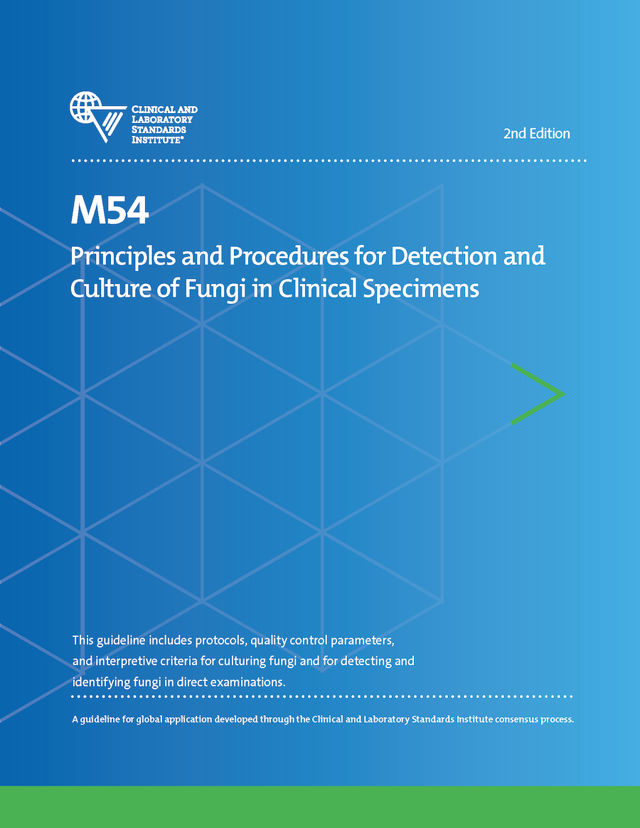Detection and Culture of Fungi in Clinical Specimens
1/13/2021

There has been an enormous increase in the frequency and severity of fungal infections in recent years. Culture from a clinical sample is the gold standard for diagnosis of fungal infection as it has the advantage of yielding the specific etiological agent if positive. Moreover, culture allows for susceptibility testing.1
The ability of the laboratorian to detect and characterize fungal elements directly from patient specimens can rapidly provide substantial information about possible pathogens. CLSI guideline M54—Principles and Procedures for Detection and Culture of Fungi in Clinical Specimens describes recommended processes for plating and examining fungal cultures as well as principles and procedures for the direct detection of fungi in clinical specimens, including criteria for performing and interpreting direct microscopic examinations. Safety considerations unique to mycology laboratories and a discussion of appropriate levels of laboratory service (eg, when to refer samples to more experienced laboratories) are also highlighted.
M54 also provides information on:
- Specimen collection, transport, and processing.
- Rejection criteria.
- Fungal stains and interpretive criteria.
- Serological and antigen-based testing and molecular assays.
- Media selection, incubation conditions, and other growth requirements for fungal cultures.
Fungal taxonomy has been updated in this edition of M54.
Reference:
- Kozel TR, Wickes B. Fungal diagnostics. Cold Spring Harb Perspect Med. 2014;4(4):a019299. Published 2014 Apr 1. doi:10.1101/cshperspect.a019299.
